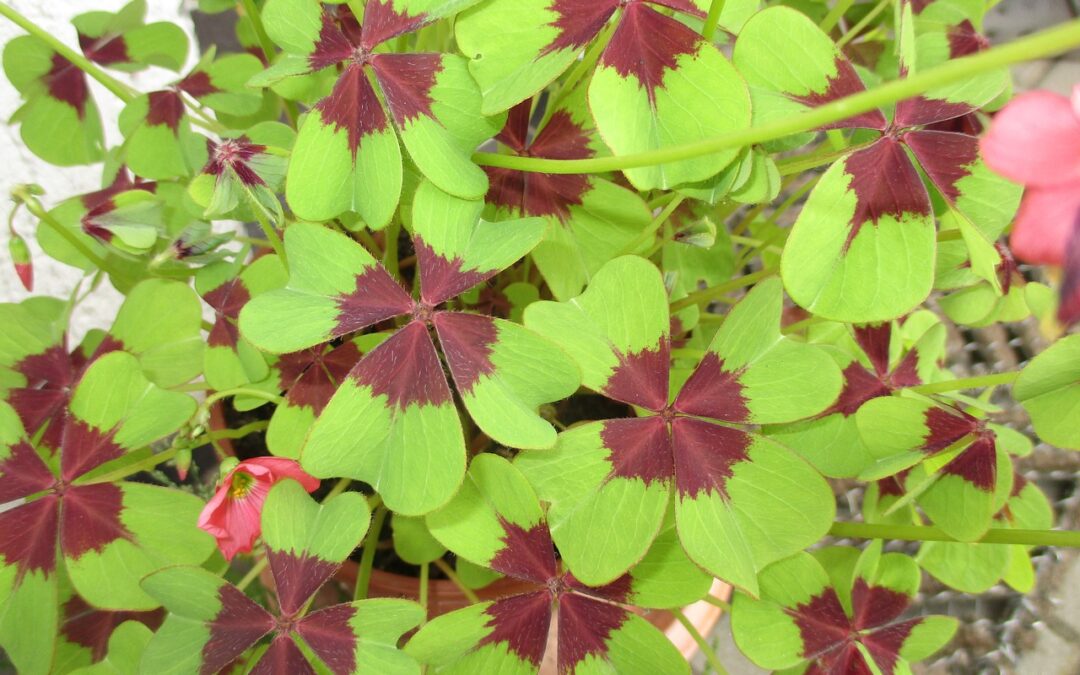Growing Shamrocks, with their delicate trifoliate leaves, are not only associated with Irish heritage and St. Patrick’s Day but they also make for delightful houseplants. These charming plants, often mistaken for clovers, are members of the Oxalis genus and bring a touch of greenery to homes. While true shamrocks struggle to thrive indoors, the Oxalis species commonly sold as shamrocks are more adaptable and can flourish in indoor environments.
What is a Shamrock?
The term ‘shamrock’ is often used interchangeably with ‘clover’, leading to some confusion. While both terms refer to plants with three-leaflet leaves, they belong to different genera. True shamrocks belong to the Trifolium genus, which includes common lawn weeds like white clover. The shamrocks commonly grown as houseplants belong to the Oxalis genus, which encompasses a variety of species with unique characteristics.
Oxalis Shamrocks: Features and Care
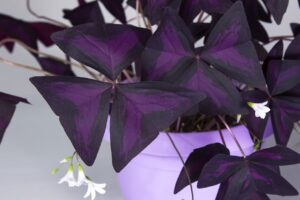
Oxalis shamrock plant showcasing its intricate leaf structure and dainty flowers
Oxalis shamrocks are valued for their attractive foliage, often adorned in vibrant shades of green or purple. Their three-leaflet leaves, reminiscent of clovers, add a touch of whimsy to indoor spaces. While not primarily grown for their flowers, Oxalis shamrocks can produce delicate blooms in white, lavender, pink, or even yellow when provided with optimal conditions.
These fascinating plants possess an interesting trait – their leaves and flowers fold together at night, only to reopen with the morning light. This movement is attributed to changes in pressure within the plant’s cells, regulated by its internal clock.
Growing and Caring for Shamrock Plants Indoors
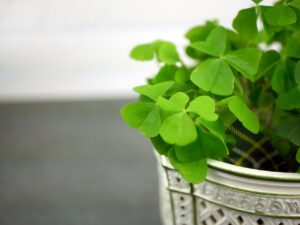
Shamrocks prefer well-drained potting soil and enjoy slightly moist conditions. They thrive in containers that allow their shallow root systems to develop comfortably. Ideal growing conditions include bright, indirect light, preferably near a south or west-facing window.
During the growing season, fertilize the plant lightly with a diluted fertilizer solution once or twice a month. After flowering, continue fertilizing to support the plant’s recovery.
Some Oxalis species exhibit a dormancy period, typically triggered by high temperatures in late summer or shorter days and cooler nights in autumn. During dormancy, the leaves may turn yellow and die. This resting phase usually lasts for 1-3 months. During this time, reduce watering and keep the plant in a cool, dark location. Once new growth emerges, resume regular watering and move the plant to a well-lit spot for optimal leaf development.
Additional Considerations
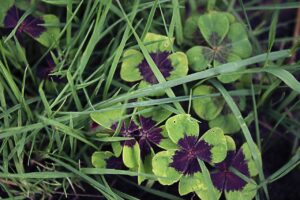
Keep shamrock plants out of reach of curious pets, as they contain oxalic acid, which can cause kidney damage if ingested in large quantities.
Shamrock plants make great potted indoor plants. When grown outdoors, shamrocks have an invasive nature. Their fast-spreading tuberous roots can spread quickly though and become a nuisance.
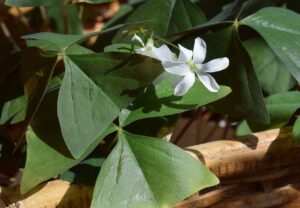
Several species and cultivars of shamrocks are available, including varieties with four-leaflet leaves instead of the usual three. These Lucky Shamrock plants are known for their ease of growth and adaptability to average room conditions.
Shamrocks, with their charming foliage and delicate flowers, make wonderful additions to indoor gardens. Their ease of care and tolerance for average room conditions make them suitable for plant enthusiasts of all levels. Whether you’re drawn to their Irish heritage or simply enjoy their aesthetic appeal, shamrock plants are sure to bring a touch of luck and greenery to your office. If you are looking to add some green to your office space give the team at Nivtop Creations a call to schedule a free consultation https://nivtopcreations.com/contact-us/


